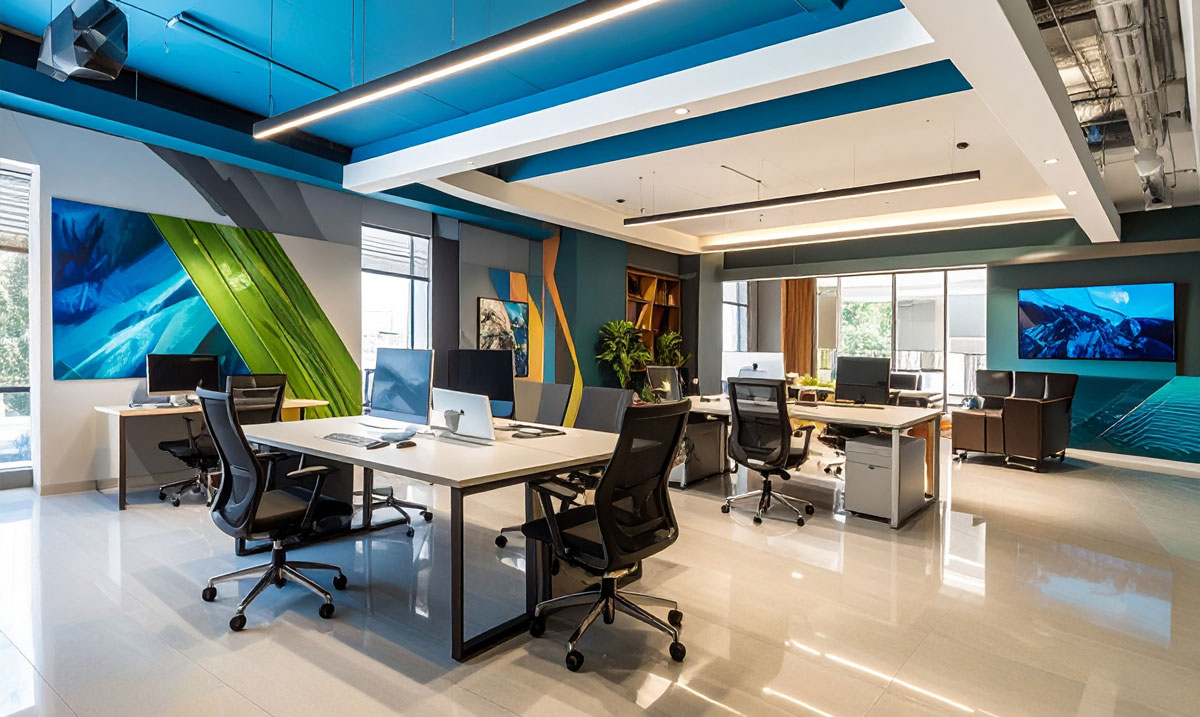
The Power of Color in the Workplace
Walk into many newly designed offices and you’ll notice a familiar trend: endless grays, stark whites, and beige tones from wall to wall. These so-called modern office design trends are often praised as sleek, minimalist, or professional.
But for the people working in them every day, they feel lifeless, uninspired, and detached.
This isn’t just about aesthetics. It’s about workplace design and color as a vital factor in employee well-being, creativity, and productivity. The absence of color in workplace interiors shows a lack of understanding of how environments impact the humans inside them.
The Psychology of Color in Workplace Design
Color is more than decoration. It’s a driver of behavior and mood. Research in office color psychology shows that:
- Blues and greens foster calm, focus, and balance.
- Yellows spark creativity, optimism, and new ideas.
- Reds increase energy and urgency (but should be used sparingly).
- Neutral palettes, while useful as a backdrop, can lead to monotony and fatigue when overused.
When workplace design ignores the role of color, it undermines both human performance and organizational culture.
Artistic Knowledge Is Business Knowledge
Workplace design directly influences business outcomes. Human-centered workplace design, including the strategic use of color, translates into:
- Higher employee morale
- Stronger collaboration
- Improved productivity
A sterile, colorless office communicates detachment and uniformity. A thoughtfully designed space with color and balance communicates vitality, innovation, and care.
This doesn’t just affect employees. It shapes how clients and visitors perceive the brand.
Minimalism vs. Sterility in Modern Office Design
There’s a difference between minimalism and sterility.
Minimalism, when done well, creates clarity and focus through balance.
Sterile workspaces, stripped of personality, texture, and vibrancy, leave employees uninspired.
A modern workplace design should use color intentionally, alongside natural materials and varied textures, to create environments that feel alive, not empty.
Why Color in the Workplace Matters More Than Ever
We spend nearly one-third of our lives at work. Our surroundings aren’t neutral. They shape mood, energy, and engagement every day.
Color in workplace design can:
- Energize teams
- Inspire creativity
- Sustain motivation
Its absence does the opposite. Draining enthusiasm and stifling collaboration.
The investment in colorful workplace interiors isn’t cosmetic. It’s essential. Companies that embrace color in their workplace design see results in employee satisfaction, stronger culture, and even business performance.
Final Takeaway
Designing workplaces is not just about efficiency or following trends. It’s about designing for humans.
And humans need more than sterile walls. They need color, balance, and environments that support creativity and vitality.
In short: Designing for humans, not sterility, means embracing the power of color in the workplace.
